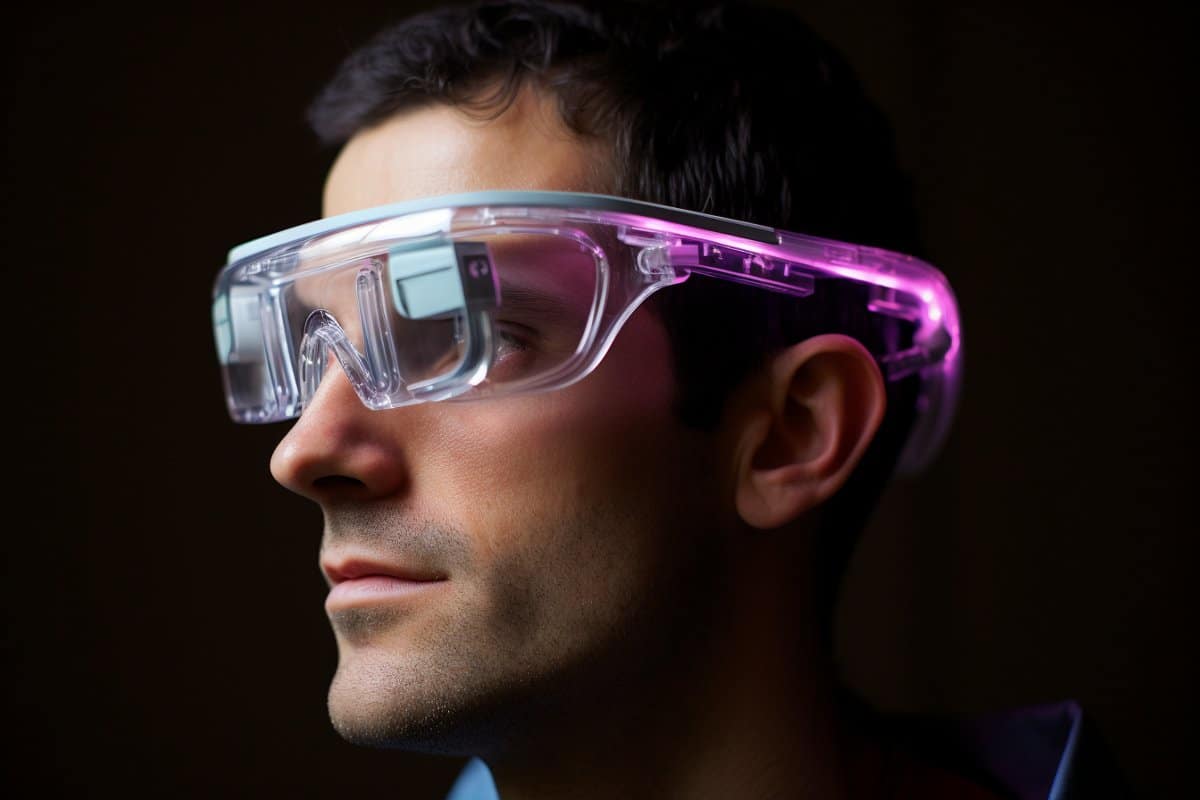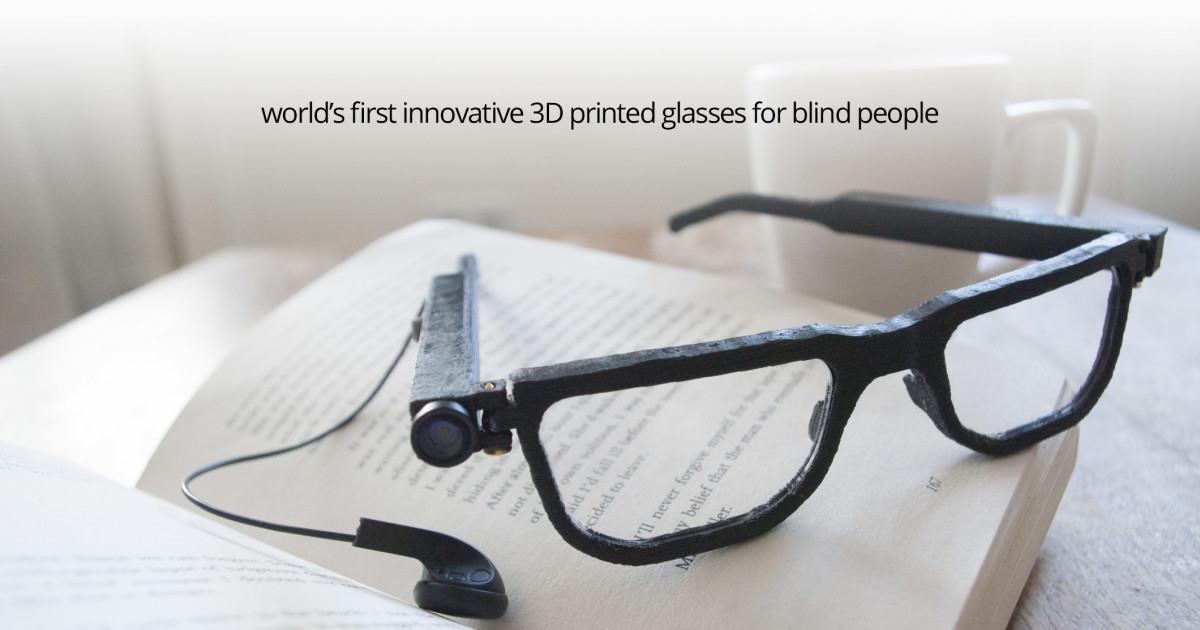Innovative Solutions in Assistive Technology for Visual Disability
The landscape of assistive modern technology for aesthetic problems is progressing rapidly, providing a range of ingenious remedies that enhance access and independence. From innovative smartphone applications that promote navigation to wearable devices developed for real-time assistance, these tools are reshaping the experiences of those with visual problems. The integration of smart home innovations and educational resources has the prospective to promote greater neighborhood engagement. Nevertheless, the implications of these developments raise important concerns regarding their accessibility and performance in varied contexts, necessitating a better examination of their more comprehensive influence.
Innovations in Smartphone Applications
In recent times, developments in smartphone applications have substantially changed the landscape of assistive technology for individuals with aesthetic disabilities. These applications utilize the effective sensors and capabilities of contemporary smart devices to supply individuals with tools that boost freedom and availability in their everyday lives.
Significant amongst these developments are applications developed for item recognition, which use the smart device's video camera to recognize things and give spoken summaries. Such attributes empower individuals to browse their settings better, whether determining products in shops or finding individual belongings at home. In addition, text-to-speech applications have enhanced drastically, making it possible for users to record printed text with their gadget's video camera and receive instant audio feedback, thus helping with analysis and understanding.
Community-driven applications have promoted social interaction and source sharing among individuals with aesthetic problems, creating a helpful network that boosts their top quality of life. In general, mobile phone applications have actually ended up being essential allies in advertising freedom and access for individuals with aesthetic disabilities.
Wearable Devices for Navigation
Wearable gadgets for navigation have arised as a groundbreaking service for people with visual impairments, providing hands-free support that enhances movement and alignment. These gadgets usually utilize sophisticated innovations, consisting of GPS, ultrasonic sensors, and artificial intelligence, to supply real-time feedback and instructions to users as they navigate their setting.
One notable instance of wearable navigation innovation is wise glasses, which can spot challenges and relay auditory or haptic feedback to the user, permitting for reliable and safe activity in various settings. Other tools, such as vests and belts geared up with sensing units, can likewise notify users of their surroundings by giving signals regarding nearby items or adjustments in terrain.
In addition, several wearable devices incorporate with smartphone applications, making it possible for individuals to personalize their navigation preferences and obtain customized path tips. This personalization can considerably boost the customer experience, encouraging individuals to take a trip with greater confidence and independence.
As modern technology remains to develop, the potential for wearable navigation gadgets to boost the lifestyle for individuals with aesthetic disabilities stays substantial, leading the way for more obtainable and comprehensive environments.
Smart Home Modern Technology Assimilation

Furthermore, smart devices geared up with responsive user interfaces or acoustic feedback give instinctive communications that provide specifically to the needs of those with visual problems. Smart refrigerators can introduce their materials and expiry dates, while clever stoves can assist users through the food preparation process with audio guidelines.
Home automation systems, such as wise doorbells and security cameras, supply assurance by enabling customers to get alerts and access live feeds by means of their mobile devices, boosting personal safety (AI-powered visual aids). In addition, assimilation find out here with tablets and smart devices guarantees that customers can manage their home environment from anywhere within their premises
As clever home technology proceeds to progress, it holds the possible to transform the living experiences of individuals with aesthetic problems, cultivating independence and improving quality of life in a progressively linked globe.

Educational Equipment and Resources
Access to efficient instructional devices and sources is vital for people with aesthetic problems, as it equips them to engage totally in their knowing experiences. Various assistive modern technologies have been established to boost ease of access and foster independent learning. Display readers, as an example, convert message right into speech, allowing pupils to accessibility digital web content flawlessly. AI-powered visual aids. Furthermore, refreshable braille screens offer responsive feedback, making it less complicated for students to connect with created product.
Moreover, instructional software application especially made for aesthetically impaired users uses functions such as high-contrast modes and customizable message sizes. These devices fit varied knowing styles and ensure that pupils can customize their academic experience to their requirements.
Additionally, accessibility to audio publications and electronic libraries broadens the variety of available knowing products, making it possible for students to discover subjects detailed without the limitations imposed by standard print resources. Collective systems that include ease of access functions likewise assist in team tasks, making certain that aesthetically impaired students can add meaningfully along with their peers.
Area Assistance and Involvement
A durable network of area assistance and involvement is essential for individuals with aesthetic problems, promoting an inclusive atmosphere where they can grow. Neighborhood companies, regional campaigning for groups, and volunteers play a critical role in giving resources, details, and companionship, which are essential for improving the lifestyle for those influenced by visual impairments.
Engagement activities such as workshops, get-togethers, and support system not only promote skill advancement however also advertise social interaction, lowering sensations of isolation. These efforts motivate individuals to share successes, experiences, and obstacles, consequently reinforcing community bonds. Additionally, collaborations with regional businesses can bring about better availability in public areas, further incorporating individuals with aesthetic problems into the neighborhood.
Innovation likewise improves community involvement with on-line platforms that supply virtual assistance click for more info groups and sources, enabling individuals to connect regardless of geographical obstacles. By taking advantage of both in-person and electronic options, neighborhoods can produce a detailed assistance network. Eventually, promoting cooperation amongst different stakeholders-- including family members, educators, and healthcare specialists-- ensures that people with visual problems get the all natural assistance needed to navigate day-to-day live effectively and with dignity.
Conclusion
Ingenious solutions in assistive technology for visual disability significantly improve the top quality of life for individuals encountering these obstacles. The assimilation of mobile phone applications, wearable devices, wise home innovation, and educational tools promotes greater independence and ease of access.
The landscape of assistive modern technology for aesthetic impairment is evolving rapidly, presenting an array of innovative services that boost access and freedom. Community-driven applications have Check This Out fostered social communication and resource sharing amongst individuals with visual problems, creating a supportive network that improves their quality of life. Generally, mobile phone applications have actually come to be vital allies in advertising autonomy and ease of access for people with visual disabilities.
Several individuals with aesthetic disabilities are locating greater freedom with the combination of smart home modern technology.Cutting-edge solutions in assistive modern technology for visual impairment dramatically boost the top quality of life for people encountering these challenges.